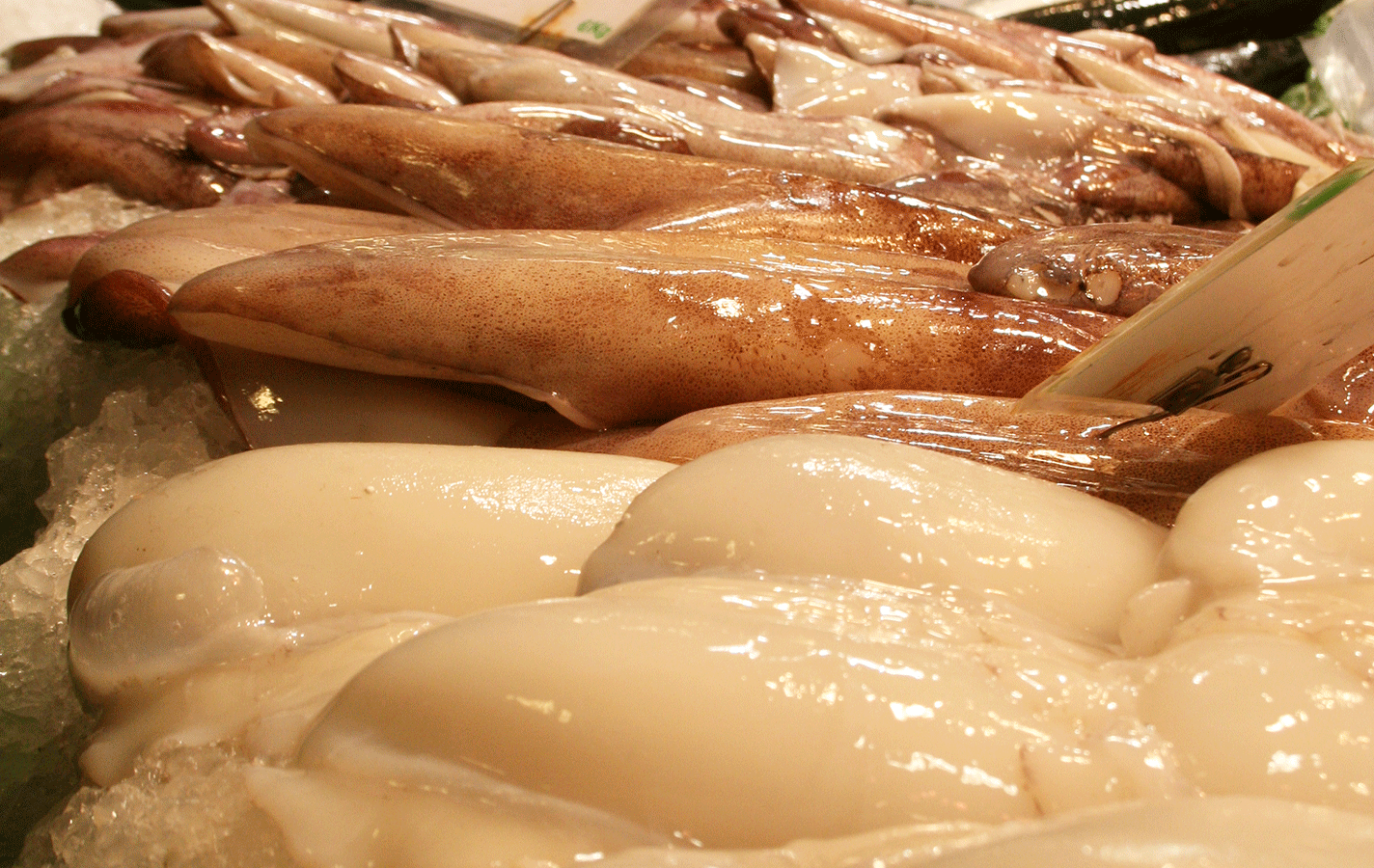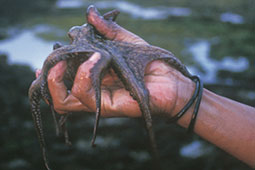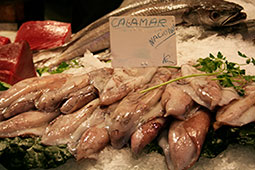Growing cephalopods demand, tighter supplies and record prices

The report analyses the market situation until June 2017
Demand for octopus as well as squid is growing stronger, but poorer landings have limited supplies. Inventories worldwide are also low, so there is no buffer either. As a result, prices have been rising across the board and are expected to continue to grow.
Octopus
 Lower catches during the winter season in Morocco have helped push octopus prices up in recent months, as global demand continues to rise. Demand is growing in all major markets such as Japan, the United States of America and Europe. The higher octopus prices caused by a tighter supply situation is proving difficult to pass on to the consumer, and this is naturally squeezing margins for major traders.
Lower catches during the winter season in Morocco have helped push octopus prices up in recent months, as global demand continues to rise. Demand is growing in all major markets such as Japan, the United States of America and Europe. The higher octopus prices caused by a tighter supply situation is proving difficult to pass on to the consumer, and this is naturally squeezing margins for major traders.
In Morocco, the southern octopus fishery quota was set at 12 200 tonnes for the season, from 15 June until 15 September. This represents a decrease compared with last year, and the resulting tighter supplies are expected to push already rising prices up. In fact, prices for Moroccan octopus are at their highest level on record, according to price data for the period 2009–2017.
The octopus fishing ban for the Yucatan peninsula in Mexico ended on the 1 August, when fishing for the Mexican four-eyed octopus (Octopus maya) as well as the common octopus (Octopus vulgaris) resumed. Total Mexican landings of octopus are about 38 000 tonnes per year, making Mexico the third largest producer of octopus in the world. Exports are destined mainly to Spain, Italy and the United States of America.
In Galicia, Spain, the octopus fishing season resumed on 3 July after a closure of 45 days. Expectations were strong, as landings last year were record high at 3 000 tonnes, a 66 percent increase compared with 2015. Significant demand in Europe, coupled with a late start to the season and scarcer catches in Morocco and Mauritania, have pushed Spanish octopus prises up this year.
Morocco and Mauritania are the main suppliers of octopus to the Japanese market. However, when supplies are tight, Japan is forced to look elsewhere for octopus. In 2016, the country bought 8 000 tonnes from China, 3 000 tonnes from Viet Nam, while Mexico, Thailand, Indonesia, India and Peru each shipped up to 1 000 tonnes to Japan. Japanese imports of octopus have been falling over the past two years. However, the rate of decline is decreasing. Of the major suppliers, Morocco saw a decline in shipments from 12 000 tonnes during the first six months of 2016 to 9 000 tonnes in 2017, while Mauritania experienced a significant increase from 5 300 tonnes in 2016 to 8 100 tonnes in 2017 (+52.7 percent).
Nippon Suisan Kaisha (Nissui) is continuing work on octopus farming, and has confirmed that it has hatched about 140 000 eggs produced by octopus, which are conceived by artificial incubation. Although mortality during the first 30 days after hatching is extremely high, Nissui expects to be able to put fully farmed octopus on the market by 2020, according to a report by Undercurrent News.
Spanish octopus imports during the first half of 2017 increased slightly (+5 percent) compared with the same period in 2016. For the suppliers, the trend was the same as in Japan; a decline in shipments from Morocco and an increase for Mauritania.
Squid
 Chinese fishing activities near the coastal waters of Argentina and Peru have increased markedly in recent years. According to a report by China's state-owned fisheries company CNFC Overseas Fisheries, Chinese fishing activity near Argentine waters increased by 270 percent in the period from 2009–2015, while Chinese activities near Peruvian waters increased by 515 percent during the same period. This increased activity has put pressure on the stocks, especially of squid, which is the main target species of the Chinese vessels.
Chinese fishing activities near the coastal waters of Argentina and Peru have increased markedly in recent years. According to a report by China's state-owned fisheries company CNFC Overseas Fisheries, Chinese fishing activity near Argentine waters increased by 270 percent in the period from 2009–2015, while Chinese activities near Peruvian waters increased by 515 percent during the same period. This increased activity has put pressure on the stocks, especially of squid, which is the main target species of the Chinese vessels.
The Peruvian Ministry of Fisheries and Aquaculture has dismissed allegations that Chinese vessels have been fishing giant squid illegally in Peruvian waters. The Deputy Minister quoted navy data showing that Chinese vessels followed by Peruvian authorities were fishing outside Peru's 200-mile exclusive economic zone (EEZ).
Argentina suspended the fishing for Illex squid from the end of June due to reports of the stocks being in very bad condition. Indeed, researchers had found that the composition of the catch in mid-May included large quantities of juveniles. There has also been a rapid reduction in landed quantities in the beginning of the year; from 24 028 tonnes in February, to 39 263 tonnes in March, 15 865 tonnes in April and 6 515 tonnes in May. At the same time, Chinese vessels have been increasing their activities outside of the Argentine 200-mile EEZ.
In the United States of America, squid is one of the most valuable items in California fisheries, with a first-hand value of about USD 70–75 million annually. The annual catch limit is 107 050 tonnes, but in the 2016–2017 season, the fleet only managed to catch about one third of that (38 600 tonnes).
Squid and cuttlefish are China's most popular seafood items, with many of China's supplies coming from the Democratic People's Republic of Korea. However, UN sanctions against the Democratic People's Republic of Korea may put an end to this trade, and Chinese importers are scrambling to get their hands on as much as possible before Chinese customs stop border trade. As a result, prices for squid from the Democratic People's Republic of Korea (mainly of the Todarodes species) have dropped substantially recently, in some cases as much as one third of the normal price.
In contrast, Argentine Illex squid prices have been on the rise because of the tight supply situation, but in China this price situation has now seemed to stabilize. As Argentine catches were disappointing, prices rose by as much as 40 percent, with price rises for larger sizes particularly strong. Even so, prices are still high and rising marginally in some markets, as demand for squid is now outstripping supply.
With the high Illex prices, other species, such as the Japanese flying squid (Todarodes pacificus) and the red oceanic squid (Ommastrephes bartarmii) have been used as substitutes, with a lower price point than the Illex. If the tight supply situation continues, prices could be expected to rise further and some fishers have been hanging on to their catch, waiting for this to occur.
The first half of 2017 saw a strong increase in Japanese imports of squid and cuttlefish, from 39 300 tonnes in 2016 to 77 400 tonnes in 2017 (+97.1 percent). Most of this came from China (47 500 tonnes), an increase of 123 percent compared with the same period in 2016. There was also a significant increase in shipments of squid and cuttlefish from Peru to Japan.
A similar, albeit not as strong trend was observed in Spain. Total imports of squid and cuttlefish increased from 127 200 tonnes during the first half of 2017 to 141 200 tonnes in 2017. The most noticeable increases came from the Falkland Islands (Malvinas) and Peru.

